
Reading Time: 11 minutes
If you’ve ever found yourself gripping the steering wheel a little tighter as snow starts falling, you’re not alone. Driving safely in snow is a challenge, even for experienced drivers. Slippery roads, reduced visibility, and unpredictable conditions make winter driving dangerous—especially if you’re not prepared.
According to the AAA Foundation for Traffic Safety, nearly 500,000 crashes and 2,000 fatalities occur each year due to winter storms, icy roads, and bad weather. Do you live in a snow-prone area or you’re traveling through one? Then knowing how to drive on snow can mean the difference between reaching your destination safely, or getting stranded in freezing temperatures.
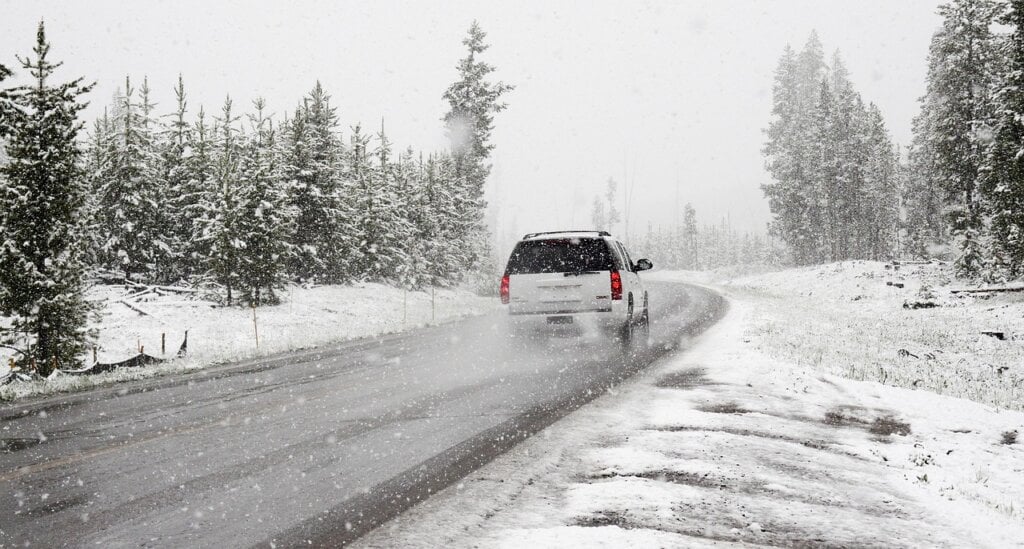
How to Drive on Snow | Your Best Guide
Winter driving isn’t just about slowing down and turning on your headlights—it requires a complete shift in how you approach the road. From preparing your vehicle before you leave to handling unexpected skids, there’s a lot to consider. Even the most experienced drivers can find themselves in dangerous situations if they’re not properly equipped.
So, how do you stay safe on snowy roads? Below, we’ve broken it down into essential tips that will help you navigate winter driving like a pro. Whether you’re planning a road trip, commuting to work, or considering shipping your car instead of driving in harsh conditions, this guide has you covered.
📊 Winter Driving Statistics | The Risks of Snowy Roads
Winter roads are more dangerous than you think. Every year, thousands of accidents occur due to snow, ice, and low visibility—and many of them are preventable. If you’re planning to drive in winter conditions, it’s important to understand the risks.
- According to the Federal Highway Administration, each year, over 1,300 people are killed and more than 116,800 are injured in vehicle crashes on snowy or icy pavement.
- Snow and ice account for 24% of all weather-related accidents in the U.S.
- These hazardous conditions significantly reduce traction and increases braking distances. This makes it more challenging for drivers to maintain control.
Other alarming statistics include:
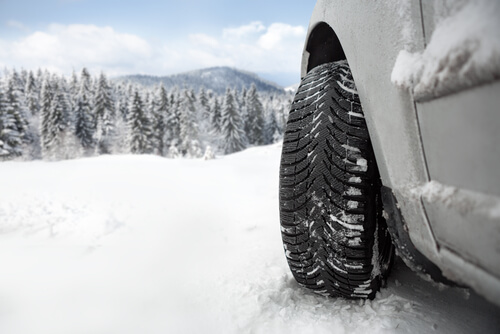
- 70% of U.S. roads are in regions that receive at least five inches of snow annually.
- Nearly 25% of all weather-related crashes happen on snowy, slushy, or icy roads.
- It can take 10 times longer to stop on ice than on dry pavement.
That’s why driving safely in snow requires extra caution, proper vehicle maintenance, and adjusting your driving habits to match the conditions.
🔹 Why These Driving Safely in Snow Stats Matter
Understanding these numbers isn’t just about awareness—it’s about preparing for reality. If you must drive in snow, you need the right equipment, knowledge, and mindset. Otherwise, the safest option may be to ship your car instead of driving in extreme winter conditions.
🚘 Vehicle Preparation | Winter-Ready Cars Save Lives
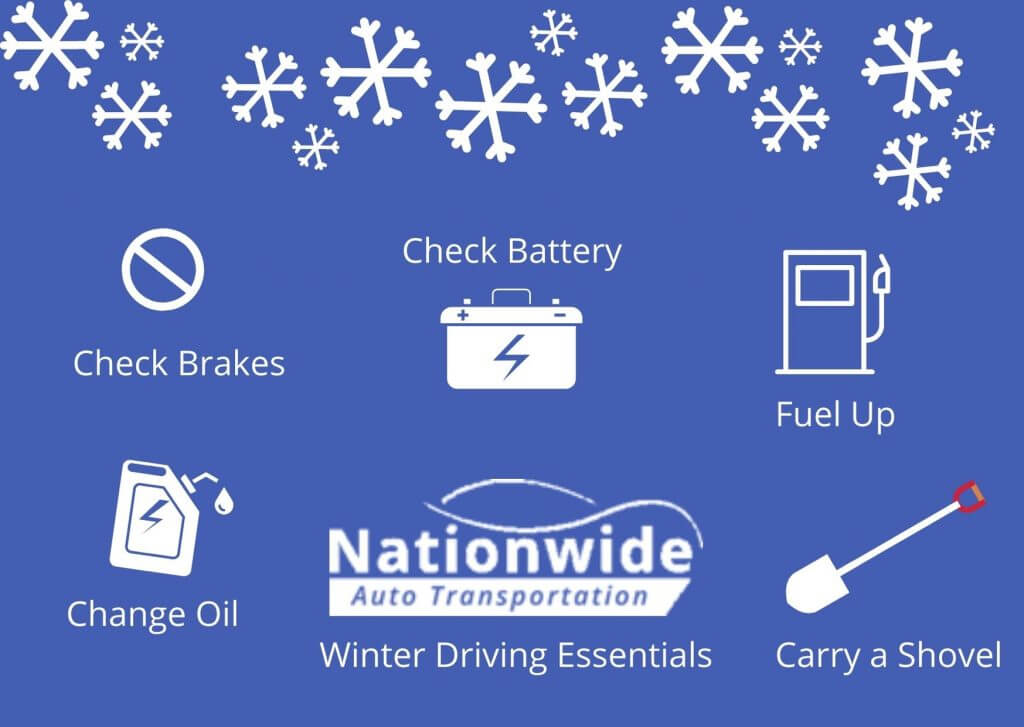
Before you even hit the road in winter conditions, your car needs to be ready for the snow and ice. A well-prepared vehicle can mean the difference between arriving safely and getting stuck—or worse, losing control on an icy road.
Driving safely in snow isn’t just about how you handle the wheel; it’s about making sure your vehicle is equipped to handle the cold, slippery conditions. Read our post on long-distance driving tips for more information on safe driving.
Essential Winter Car Maintenance Checklist | Snow Driving Safety
To improve snow driving safety, check these critical components before winter driving:
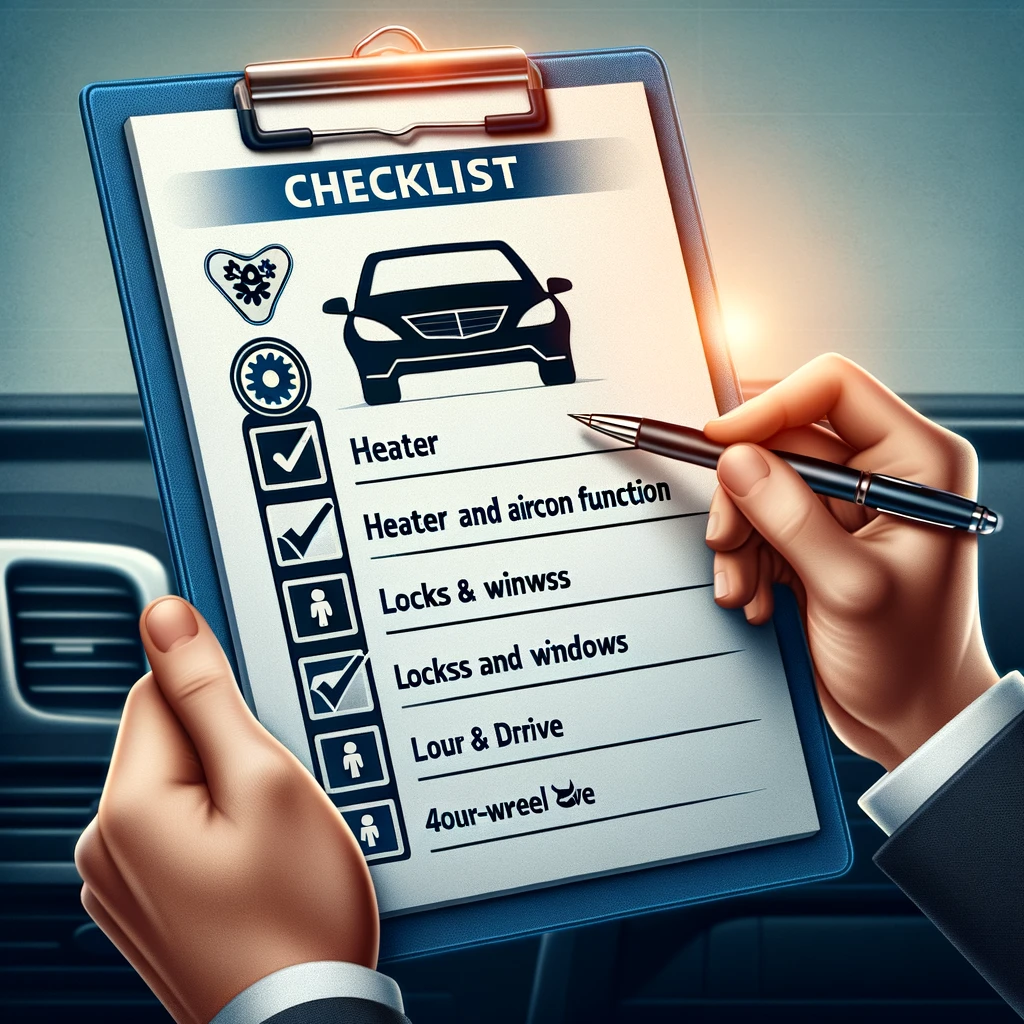
✅ Tires & Traction
- Install winter tires for better grip on snow and ice.
- Your tires must have at least 3/32 inches of tread depth (winter tires perform best at 6/32 inches or more).
- Check tire pressure regularly—cold weather causes pressure to drop.
Brakes & Stability
- Test your anti-lock braking system (ABS) to prevent skidding.
- Have your brake pads and rotors inspected for wear.
- Check traction control and stability systems—they help maintain control on slick roads.
✅ Battery & Fluids
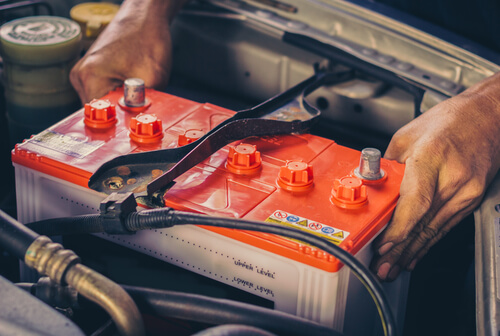
- Cold weather drains car batteries faster; get a voltage test if yours is over three years old.
- Top off antifreeze and windshield washer fluid to prevent freezing.
- Use winter-grade motor oil (check your owner’s manual for recommendations).
Visibility & Lighting
- Replace old wiper blades with winter-specific ones.
- Check that headlights, taillights, and brake lights are bright and functional.
- Keep defrosters and heaters in good working order for clear windows.
✅ Emergency Winter Kit (Must-Haves in Your Car)
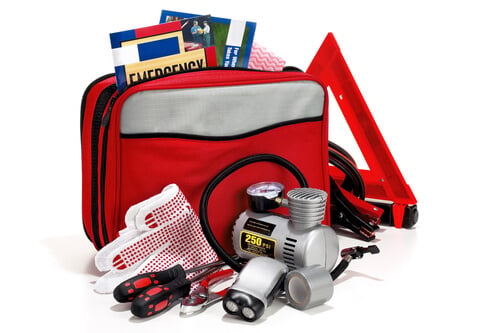
- Ice scraper and snow brush
- Jumper cables
- Flashlight with extra batteries
- Blankets, warm clothing, and gloves
- First aid kit
- Non-perishable snacks and water
- Sand, salt, or kitty litter for traction
🚨 Pro Tip: Even if your vehicle is winter-ready, some road conditions can be too dangerous. If you’re relocating or need to travel long distances, shipping your car might be the safest option. Read our Starter Story to learn more about our company.
Driving in Snow | Advice to Assist

There are road rules, and then there are best practices for driving in snow and ice. Nationwide Auto Transportation’s drivers are on the road all year round. With that, they encounter storms, breakdowns, and all kinds of unforeseen issues.
Not only do they know how to drive safely in snow and ice, but they also keep a number of other winter driving survival tips up their sleeves. Why? Because it is not unusual for these hardworking men and women to end up stuck on the side of snowed-in roads. Thankfully, they are always prepared and extra cautious in adverse weather conditions whether it’s holiday driving or auto shipping.
❄️ How to Drive Safely in Snow and Ice
Driving in winter weather requires adjusting your habits to prevent accidents. Snow and ice make roads unpredictable, reducing traction and increasing stopping distances. Whether you’re commuting, road-tripping, or heading south for the season, driving safely in snow means following these expert-backed strategies.
🔹 1. Snow Driving Safety | Adjust Your Speed and Following Distance
- Drive slower than usual—speed limits are based on ideal conditions, not icy roads.
- Keep at least 6-10 seconds of following distance between you and the car ahead.
- Avoid sudden stops; instead, ease off the gas and brake gently.

🔹 2. Know How to Brake on Snow and Ice
- If your vehicle has anti-lock brakes (ABS), press firmly on the brake pedal and let the system do the work.
- For cars without ABS, use the “pump braking” technique—press and release the brakes in short bursts.
- Never slam on the brakes, as it can cause your wheels to lock up and send you into a skid.
🔹 3. Watch for Black Ice
- Bridges, overpasses, and shaded areas freeze first, even if roads seem clear.
- If you hit black ice, don’t panic—take your foot off the gas and steer gently in the direction you want to go.
🔹 4. Use the Right Gear for the Road

- Downshift to lower gears on steep hills to maintain control.
- If your vehicle has a snow mode, activate it for better traction.
- Avoid using cruise control—you need full control over acceleration and braking.
🚗 Planning a long-distance winter drive? Some snowbirds choose to ship their cars instead of driving through hazardous conditions. If you’re heading south for the season, consider the Nationwide Auto Transportation Snowbird Car Shipping Service to avoid winter road risks.
🔹 5. Turn into a Skid if You Start Sliding
- If the rear wheels skid, turn your steering wheel in the direction of the slide.
- If the front wheels skid, ease off the gas until you regain control.
- Keep your eyes focused on where you want to go, not on the obstacle you’re trying to avoid.
🚨 Want more in-depth winter driving advice? The National Highway Traffic Safety Administration (NHTSA) offers essential guidelines for winter road safety.
✅ Next Up: 🚨 Handling Skids and Emergencies
🚨 Handling Skids and Emergencies | Snow Driving Safety
Driving safely in snow and ice requires careful preparation and cautious driving techniques. According to the National Highway Traffic Safety Administration (NHTSA), in 2022, there were 498 fatal traffic crashes and an estimated 32,213 injury crashes during snow or sleet conditions.
Key Tips for Safe Winter Driving:
- Increase Following Distance: Maintain at least three times the normal following distance for ample stopping time.
- Use Low Gears: Especially on hills, using lower gears can help maintain traction.
- Avoid Cruise Control: Do not use cruise control on slippery surfaces to maintain control of your vehicle.
- Stay Home if Possible: If conditions are severe, it’s best to avoid driving unless absolutely necessary.

For more automotive expertise, read this informative post on Car and Driver.
Military personnel relocating during winter months must plan vehicle transportation carefully. Our Military Auto Transport services offer specialized solutions to guarantee your vehicle safe arrival. Regardless of weather conditions.
Before starting out on a journey
Before starting out on a journey in snowy conditions, a well-maintained vehicle is a must. Check tire tread depth, battery health, and keep your gas tank at least half full to prevent gas line freeze-up.
If you’re considering transporting your vehicle to avoid winter driving hazards, obtaining a reliable quote is essential. Our Auto Transportation Quote Calculator provides instant, free, no-obligation quotes to help you plan accordingly.
Remember, safety is paramount. By following these guidelines and staying informed, you can navigate winter roads more confidently.
🚗 What to Do If You Get Stuck in Snow
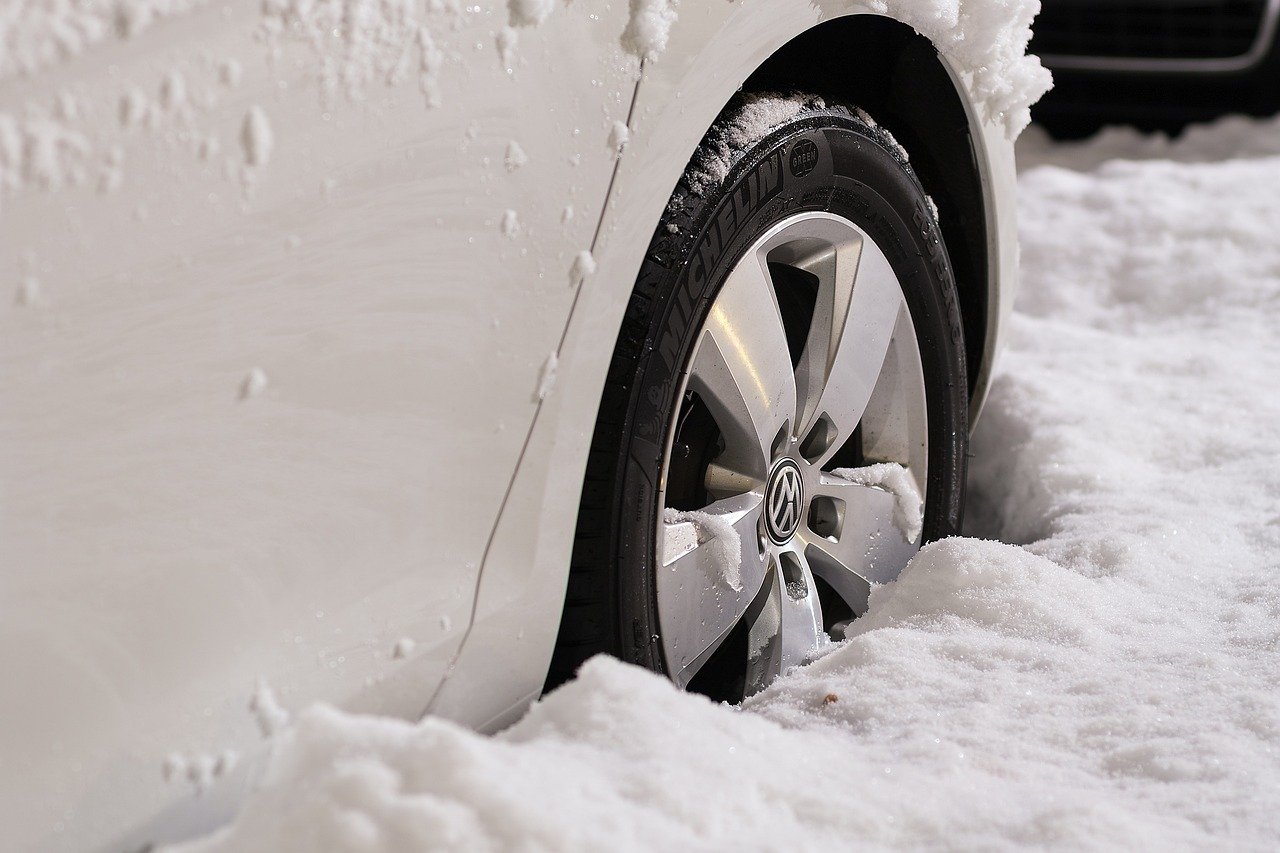
Even the most cautious drivers can end up stuck in snow. Whether it’s heavy snowfall, an icy incline, or a snowdrift, driving safely in snow also means knowing how to get unstuck.
“Your best defense against skidding is staying smooth—smooth steering, smooth braking, and smooth acceleration. Quick, jerky movements make skids worse.”
– Mark Cox, Director of the Bridgestone Winter Driving School
Here’s what to do if your car won’t budge.
🔹 1. Stay Calm and Assess the Situation
- Check that your exhaust pipe is clear of snow to prevent carbon monoxide buildup inside your car.
- Turn on your hazard lights and place warning triangles if available.
- Avoid excessive acceleration—spinning your wheels will only dig you in deeper.
🔹 2. Try Rocking Your Car
- Shift between drive and reverse, pressing the gas lightly to build momentum.
- If your car moves slightly, keep going until you gain enough traction to escape.
🔹 3. Improve Traction Under Your Tires
- Clear snow around the wheels using a shovel or your hands.
- Sprinkle sand, salt, or kitty litter around the tires for grip.
- Use your car mats under the tires if you don’t have traction materials.
🔹 4. Deflate Tires Slightly for More Grip
- Lowering tire pressure by a few PSI increases the surface area, improving traction.
- Reinflate tires once you’re on safe ground.
🔹 5. Call for Help If Needed
- If conditions worsen, stay inside your car to preserve warmth.
- Call roadside assistance – 1-800-AAA-HELP – or local authorities if you’re stranded for too long.
🚗 Winter road trips can be risky, especially for snowbirds traveling long distances. If you’d rather avoid the dangers of driving in snow, consider using Nationwide Auto Transportation’s RV Auto Transport service for safe and reliable RV shipping.
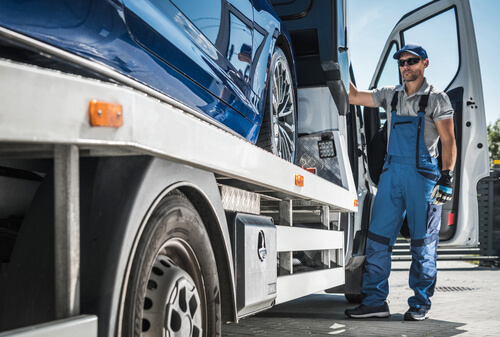
Pro Tips from Professional Auto Transport Drivers
Our team at Nationwide Auto Transportation works with seasoned long-haul truckers who transport vehicles year-round—even in the harshest winter conditions. Here’s driving in snow advice that they’ve learned from years of navigating snow-covered highways and icy roads.
🔹 Driving in Snow Advice | Keep Your Vehicle Prepared
“Every winter driver should have an emergency kit ready. You never know when you’ll be stuck in snow for hours.” – Mike R., Auto Transport Driver
- Always have jumper cables, blankets, extra fuel, and snacks in your car.
- Keep your gas tank at least half full to prevent fuel line freeze.
Drive Smoothly—No Sudden Moves
- Sudden braking, turning, or accelerating increases the risk of skidding.
- Slow down on curves and inclines to maintain control.
🔹 Avoid Overconfidence in AWD or 4WD | in snow and ice
- “All-wheel drive helps with acceleration, not braking. Even AWD cars skid on ice!” – Sarah T., Fleet Manager
- Use winter tires, not just AWD, for real traction.
Plan Ahead and Check Weather Reports
- Professional drivers never hit the road without checking conditions first.
- Apps like NOAA Weather Radar and Waze help track real-time road hazards.
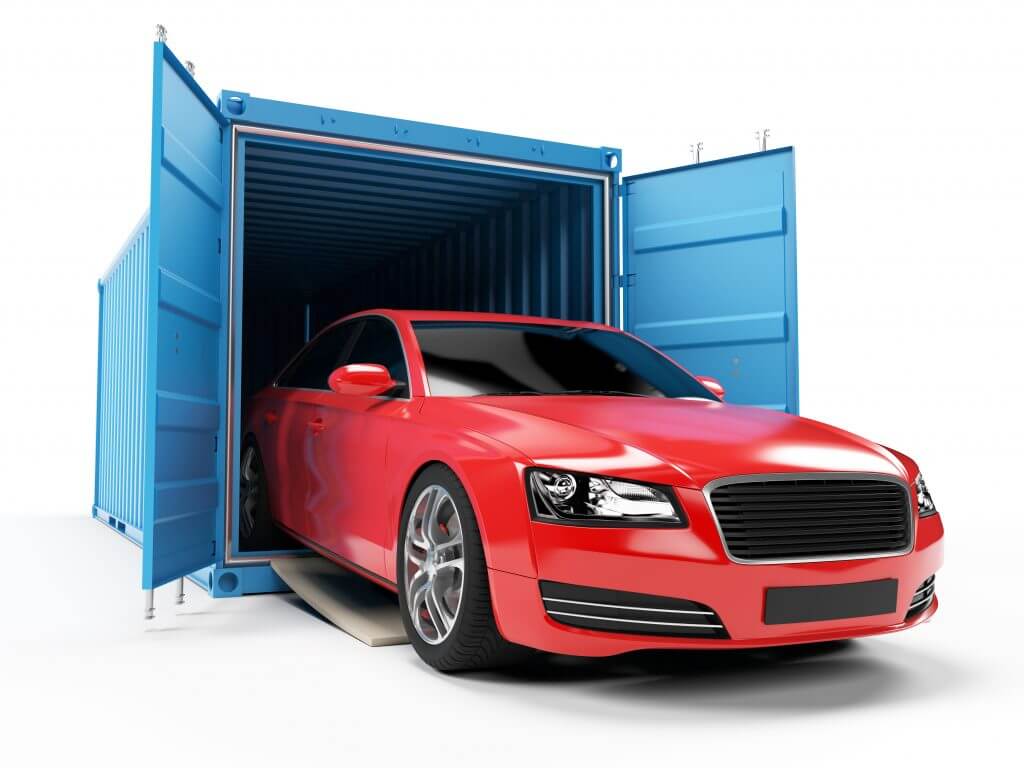
🔹 Consider Vehicle Shipping Instead of Driving
If the forecast looks bad, many drivers opt to ship their vehicles instead of risking winter roads. Our Enclosed Car Shipping Service helps travelers avoid icy highways while getting their cars to warmer destinations safely.
📦 Final Thoughts | Is It Better to Ship Your Car in Winter?
If winter driving makes you anxious, you’re not alone. Slippery roads, black ice, and poor visibility increase the risk of accidents—so why take the chance?
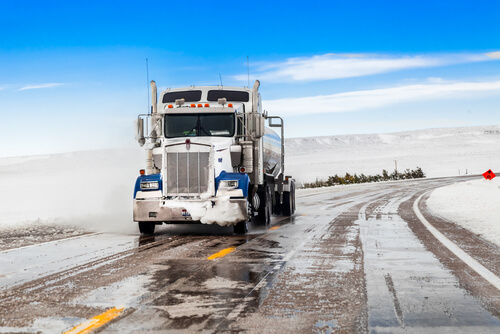
✅ Driving in Snow Safety tips | Reasons to Ship Instead of Drive:
- Avoid long hours of stressful winter driving.
- Prevent wear and tear on your car from road salt and ice.
- Keep your vehicle safe from accidents and winter-related breakdowns.
- Ideal for snowbirds, military relocations, and long-distance travelers.
🚗 Thinking about shipping your car this winter? Get a free, no-obligation quote today with Nationwide Auto Transportation and travel with peace of mind!

❄️ FAQ | Your Top Winter Driving Questions Answered
Winter driving can be nerve-wracking, especially when dealing with snow-covered roads, ice patches, and poor visibility. Below, we answer the most common driving in snow safety tips to help you stay safe and in control.
🔹 What is the best advice for driving in the snow?
The #1 rule for driving safely in snow is to slow down and drive smoothly. Sudden movements—braking, accelerating, or turning too quickly—can cause skidding.
✅ Top Snow Driving Tips:
- Reduce speed and increase following distance.
- Use winter tires for better grip.
- Avoid cruise control—you need full control on icy roads.
- Gently press the brakes and accelerator to maintain traction.
🚗 Bonus Tip: If you’re facing severe winter conditions, consider using a car shipping service instead of driving through snow and ice.
🔹 What is the best drive option for snow?
All-wheel drive (AWD) or four-wheel drive (4WD) vehicles handle snow better than front-wheel drive (FWD) or rear-wheel drive (RWD). However, AWD does not make you invincible—proper winter tires are even more important!
✅ Best Vehicles for Snow Driving:
🚙 AWD & 4WD Vehicles: Great for traction, but don’t help with stopping.
🚗 FWD Cars: Better than RWD, but need winter tires.
🚕 RWD Cars: Worst for snow—these struggle in slippery conditions.
Verdict: If you’re driving in snow often, AWD or 4WD with winter tires is the best choice. However, snow tires on FWD are better than AWD on all-season tires.
🔹 How should you brake in the snow?
Braking incorrectly on snow and ice can send your car into a skid. Here’s the best way to brake safely in winter conditions:
✅ If Your Car Has ABS (Anti-lock Braking System):
- Press and hold the brake pedal firmly.
- You may feel a pulsating motion—this is normal!
✅ If Your Car Does NOT Have ABS:
- Pump the brakes gently (press and release in quick bursts).
- Never slam the brakes—it can cause your wheels to lock up and lead to skidding.
🚨 Bonus Tip: Always brake early in snow and keep a longer following distance—stopping distances increase 10X on ice!
🔹 How to not crash in the snow?
The best way to avoid a crash in winter weather is to anticipate problems before they happen.
✅ How to Reduce the Risk of an Accident:
- Slow down—most crashes happen because drivers go too fast.
- Leave extra space between you and other cars.
- Stay off black ice zones—bridges, overpasses, and shaded areas.
- If you start to skid, look where you want to go (not at obstacles).
🚗 Considering a long drive this winter? If snow and ice make you uneasy, you might be better off shipping your car. Check out Nationwide Auto Transportation’s services for a stress-free winter solution.
Final Winter Driving Tip

If you don’t HAVE to drive, don’t. Many winter accidents can be avoided by staying off the roads when conditions are bad. If you must travel, prepare your car, drive cautiously, and know how to react to icy conditions.
Contact us for any other assistance or information!




